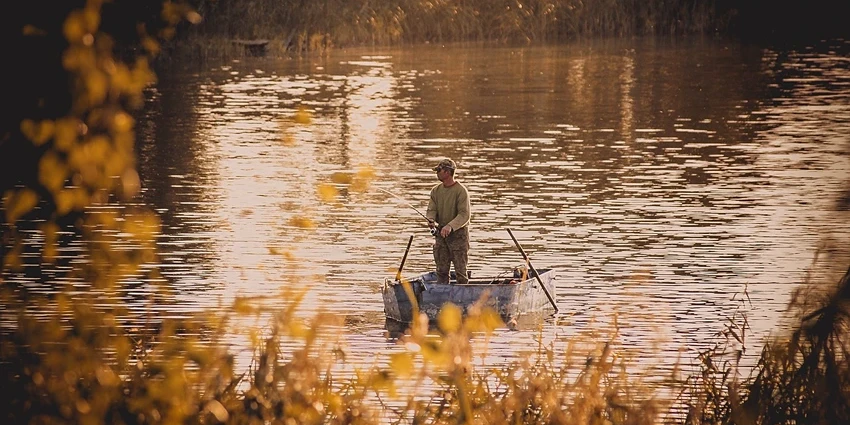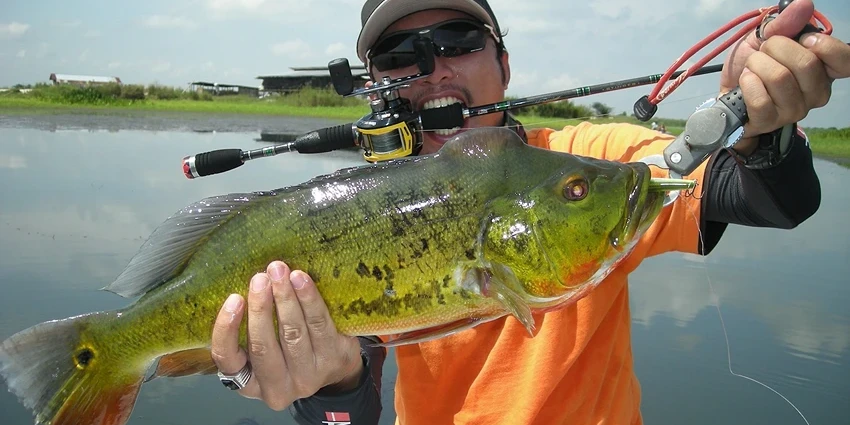All products were chosen independently by our editorial team. This review contains affiliate links and we may receive a commission for purchases made. Please read our affiliates FAQ page to find out more.
Fishing isn’t just about the catch; it’s an immersive experience with nature, a story waiting to be told through your lens. Whether you’re a seasoned angler or a newbie with a camera, capturing the essence of freshwater fishing can be as rewarding as the fishing itself. Let’s dive into the world of fishing photography, where every shot tells a tale of patience, thrill, and the beauty of the great outdoors.
Jump to:
Choosing the Right Gear for Fishing Photography
Selecting the Right Camera
When it comes to fishing photography, your camera is your best friend. It’s essential to choose a camera that can withstand the elements. A waterproof, durable camera like the Olympus Tough TG-6 is a great choice, as it’s designed to endure the rugged conditions of outdoor photography. Remember, the best camera is one that doesn’t just survive the trip but also captures sharp, vivid images without being a burden.
Lens Choices for Different Scenarios
Different lenses can dramatically change the outcome of your fishing photos. A wide-angle lens is perfect for capturing scenic landscapes and the expanse of the water, while a macro lens can help you focus on the intricate details of your catch or your gear. The key is to have a versatile lens kit that allows you to switch between different types of shots seamlessly.
Mastering the Basics of Fishing Photography
Understanding Camera Settings
The magic of a great photo often lies in mastering the camera settings. Modern cameras, like the Nikon Z 711 or Canon EOS R5, offer a range of settings that can be overwhelming at first. However, focusing on mastering the basics like autofocus, shutter speed, and aperture can make a significant difference. For instance, a fast shutter speed is crucial for freezing the action during a big catch.
Composition Techniques
Composition is the heart of photography. Techniques like the rule of thirds, leading lines, and framing can transform a simple photo into a compelling story. When photographing your fishing adventures, try to include elements that lead the eye towards your subject, whether it’s the angler, the fish, or the landscape.
Creative Angles and Perspectives
Experimenting with Different Angles
Don’t be afraid to get down low or find a higher vantage point. Changing your perspective can add an element of surprise and originality to your fishing photos. Try capturing the angler’s focused expression from a low angle or the expanse of the water from an elevated position.
Capturing the Action: Techniques for Dynamic Fishing Shots
Timing Your Shots
The thrill of the catch is a moment of high action and emotion. Timing your shot to capture that split second when the fish leaps out of the water or the angler’s triumphant smile can make for an unforgettable image. It’s about anticipating the action and being ready to click at the right moment.
Motion and Excitement
Capturing motion in fishing photography can be challenging but rewarding. Use a faster shutter speed to freeze the action or a slower one to create a sense of movement, like the blur of a spinning reel or a fish darting through the water.

Ethical Considerations in Fishing Photography
Respecting Wildlife and Natural Habitats
As photographers, it’s our responsibility to respect the wildlife and habitats we’re capturing. This means being mindful of not disturbing the natural environment and ensuring that our presence doesn’t negatively impact the ecosystem.
Sustainable Practices
Promoting sustainable fishing practices through photography is not just about the catch; it’s about showcasing the beauty of the sport in harmony with nature. This includes practicing catch and release, being mindful of local regulations, and highlighting the importance of conservation in your images.
Advanced Techniques in Fishing Photography
Using Filters and Advanced Camera Settings
Polarizing Filters
Polarizing filters are a game-changer in fishing photography. They enhance the richness of colors, reduce glare, and allow you to see through the water’s surface. It’s like adding an extra layer of clarity and vibrancy to your photos.
Flash in Bright Light
Using a flash during bright daylight might seem counterintuitive, but it can help illuminate shadows and balance the lighting in your photos. This technique is particularly useful for capturing details on the fish and the angler’s expressions.
Post-Processing Tips
Enhancing Colors and Contrast
Post-processing is where you can fine-tune your images. Adjusting the colors, contrast, and sharpness can bring out the best in your fishing photos. Remember, the goal is to enhance the photo without making it look unnatural.
Register for our latest in-depth reviews and product round-ups from the experts
Enter your email address below to receive our twice monthly reviews emails.
By entering your details, you are agreeing to our terms and conditions and privacy policy. You can unsubscribe at any time.
Storytelling Through Fishing Photography
Capturing More Than the Catch
Fishing photography is as much about the story as it is about the catch. Capture the preparation, the environment, the anticipation, and the camaraderie. Each of these elements adds to the depth of your story.
Including Human Elements
Don’t forget to include the human element in your photos. The joy, the frustration, and the concentration—these emotions are what make your fishing stories relatable and compelling.
Safety and Preparation for Fishing Photography Outings
Essential Gear and Safety Tips
Safety should always be your priority. Ensure you have the right gear for the conditions, and always be aware of your surroundings, especially when near water.
Preparing for Different Weather Conditions
The weather can be unpredictable. Be prepared for changes in light and weather conditions. This might mean carrying waterproof gear or understanding how to adjust your camera settings quickly.
Frequently Asked Questions
Use a fast shutter speed to freeze the action. This is crucial for capturing those dynamic moments when the fish is being reeled in.
Cloudy days provide soft, diffused light. Embrace it by focusing on the mood and atmosphere it creates. Adjust your camera settings to compensate for the lower light levels.
Always prioritize the well-being of the fish. Keep them in water as much as possible and handle them gently. Remember, the photo is not more important than the fish’s health.
Martin Cochran, renowned for his expertise in deep-sea fishing and marine wildlife, plays a pivotal role at Fresh Catch Daily. His adventures across various oceans have equipped him with unique insights and techniques, enriching our platform with diverse and engaging content for fishing enthusiasts.







